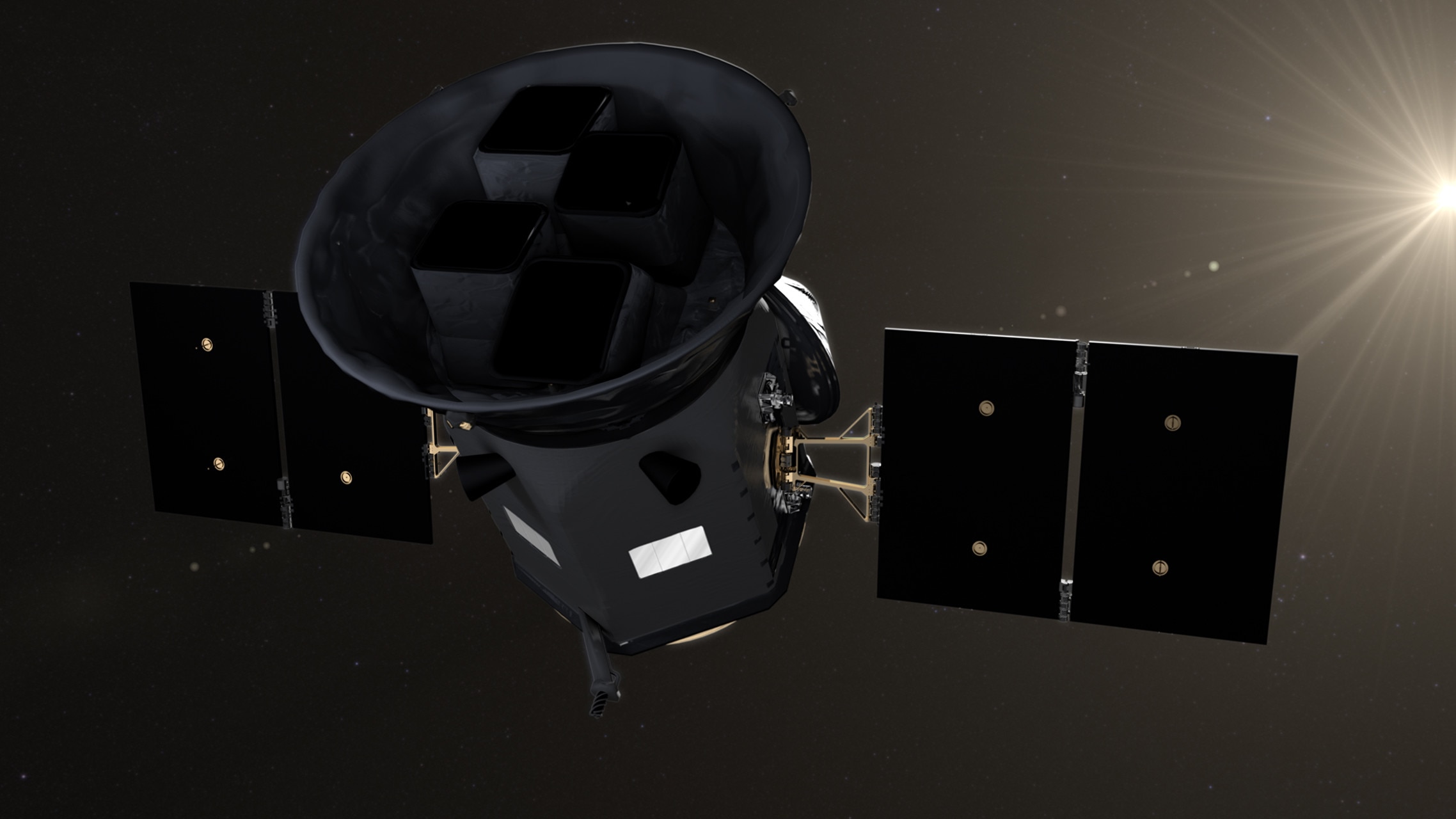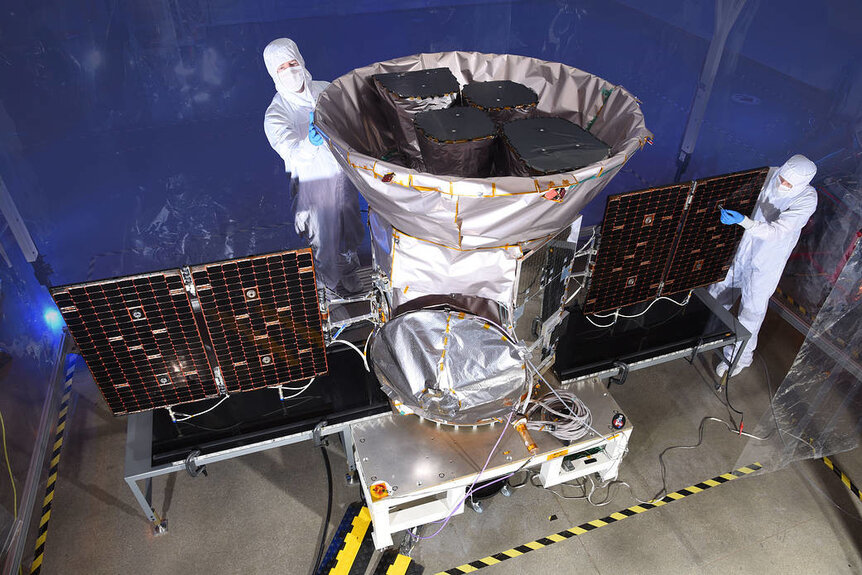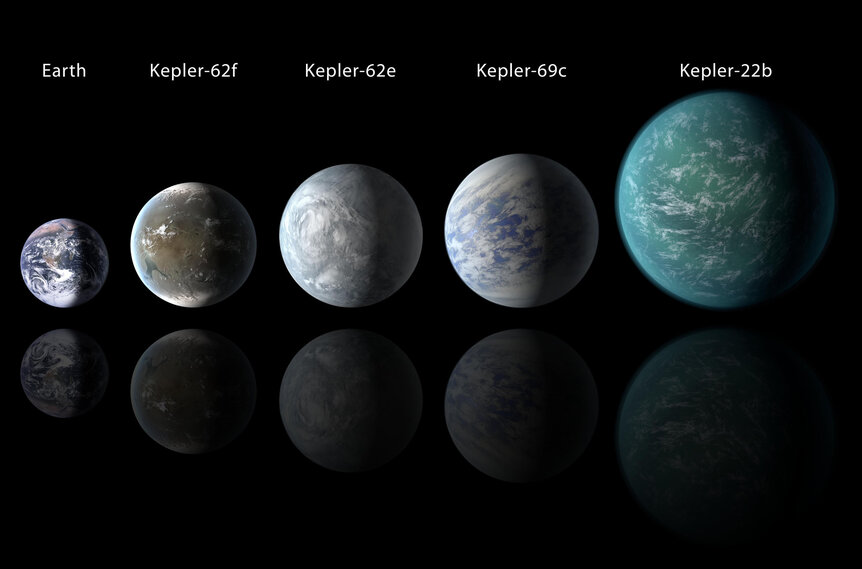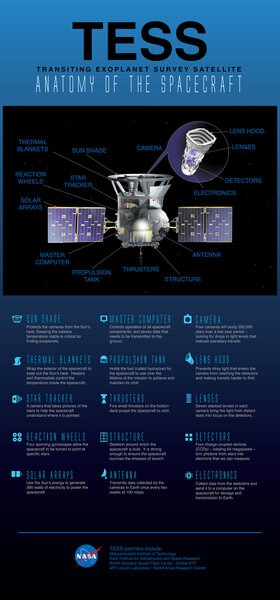Create a free profile to get unlimited access to exclusive videos, sweepstakes, and more!
Everything you need to know about TESS, NASA's new planet-finding space observatory

Update (April 16, 2018, at 20:30 UTC): The launch was scrubbed, and has been rescheduled for Wednesday, April 18. SpaceX says it's for "additional GNC [Guidance, Navigation, and Control] analysis." I am unfortunately on travel Tuesday and may not be able to update the blog with news, so follow TESS on Twitter for updates.
Update 2 (April 18, 2018, at 20:30 UTC): The new launch window opens tonight at 18:51 Eastern US time. Hopefully this time the light will stay green!
If all goes well, at 18:32 local US Eastern time today (April 16, 2018), a Falcon 9 rocket will roar into space from the Cape Canaveral launch complex in Florida. Tucked away inside the payload fairing on top of the rocket is TESS, NASA's next great planet-finding observatory.
TESS stands for Transiting Exoplanet Survey Satellite, and it's designed to sweep the sky and look for Earth-analogue planets orbiting nearby stars.
But first: You can watch the launch on NASA TV, on NASA's UStream channel, and on the SpaceX webcast. Before you ask, yes, they will attempt to recover the first stage booster.
So. What's TESS and how's it going to do what it does?
Astronomers announced the first confirmed planet orbiting another star (a pulsar) in 1992. Three years later one was found orbiting a Sun-like star, then more followed. Not long after that, transiting exoplanets were found: Because we see some exoplanets with their orbits edge-on from Earth, they pass directly in front of their host stars. When this happens, an orbiting exoplanet blocks a little bit of the starlight, and we see the star's brightness dip. It's usually a small amount, but with big planets and small stars the transit can produce a dip of a percent or more, easily detectable with modern equipment.
NASA launched the Kepler mission in 2009 to look for more. It pointed at one spot in space (in the constellation of Cygnus), starting at something like 150,000 stars, checking their brightness. It has found more than 2,300 confirmed exoplanets, and nearly the same number of candidates (suspected exoplanets that need follow-up observations to confirm they're real). It suffered some mechanical problems that made pointing an issue, but engineers were able to salvage the mission; now it sweeps around the sky with less ability, but it's still functional. This K2 mission has found over 300 more exoplanets.
Kepler was designed to look deep into the galaxy, sensitive to faint stars to maximize the number of planets it could find. The question Kepler was tasked to answer is "How many and what kind of exoplanets are out there?"
TESS will answer a different but no less important question: "Where are the nearest rocky planets?"
To do this, it will scan a staggering 85% of the sky (an area 400 times larger than Kepler did) to look at the 200,000 or so of the brightest stars, measuring their brightness and seeking out transits. These stars are preferentially closer to the Earth (less than about 300 light-years or so), so it will find some of the nearest exoplanets in the galaxy. It will find a lot of planets in total, but estimates are that it should find roughly 50 smaller than about four times the Earth's diameter.
These are called super-Earths, and are in the size range where the planet is still potentially rocky with an atmosphere. Planets bigger than this tend to grow in size rapidly when they form, becoming mini-Neptunes; smaller than Neptune but likely possessing thick atmospheres. So four Earth widths or smaller is the sweet spot for planets like ours.
The beauty of TESS is that, because it's looking at brighter stars, any planets found are easier to observe for follow-up measurements on the ground. This is critical: That means we can aim spectroscopes at them, breaking the starlight up into its individual colors. If you do that finely and precisely enough, a vast amount of information can be found about the planets. The single most important: the planet's mass.
As a planet orbits a star, its gravity tugs on the star. The planet makes a big circle (or ellipse) and the star responds by making a smaller one. We can't see that motion directly, but as the star moves it sometimes approaches and sometimes recedes from us, and that means we can look for a Doppler shift in its spectrum. The more massive a planet, the harder it tugs on the star, and the faster the star moves. So by taking a star's spectrum, we can measure the mass of the planet.
The transit gives us the size (the amount of starlight blocked depends on the planet size). When we have both mass and size, we can get the density. And that, oh yes that, is the goal.
A planet with a thick atmosphere is less dense than a rocky one with a more Earth-like atmosphere. If we can determine the density, we can start to know the planet.
Also, in some cases the atmosphere of the planet can be detected as it orbits the star. Spectra can then reveal its composition. So yeah, finding ones nearby is very, very important.
And that's just what TESS will do.
Given its grand mission, the observatory is actually shockingly small. Watch this video of technicians prepping it for launch:
The whole thing is about the size of a big refrigerator, and weighs less than 400 kilos! It has four cameras on board, which are more like telephoto lenses. They're only about 10 centimeters in diameter, but the point is to see a lot of sky at once. And they'll do it: The 16.8 megapixel cameras will observe a staggering 24 x 24° area of sky (the full Moon is 0.5° across, so TESS will see an area over 700 times bigger). They'll sweep the southern hemisphere sky for a year, then switch to the north.
I also have to talk about its orbit for a moment. Because it's… weird.
Instead of a low-Earth orbit, or one orbiting the Sun (like Kepler), TESS will be in a highly elliptical orbit that will take it from 110,000 to 375,000 kilometers from Earth. The orbit will also be tipped by 37°. Why such an odd configuration?
It's because this orbit is special. It's synched up so that when TESS is at apogee (farthest from Earth), the Moon is always 90° around its own orbit away from TESS. Not only that, but TESS's orbit takes it half as long to go around the Earth as the Moon does, so when TESS is at apogee one orbit the Moon will be on one side of it, and when it reaches apogee again about 13.6 days later, the Moon will be on the other side of it. This way, the effects of the Moon cancel out over the course of the month, and TESS's orbit is stable.
The long orbit has other advantages. It keeps TESS away from Earth's magnetic field, which can affect the spacecraft operation. It also keeps it in sunlight all the time, so there aren't thermal stresses on it. Low-Earth orbit satellites pass from sunlight into Earth's shadow sometimes many times per day, and that huge temperature swing can shorten the satellite's usability.
To get on this strange path, TESS will first be placed into a low Earth orbit by the Falcon 9. Then it has to raise its apogee over several orbits by firing its thrusters, until it gets close enough to make a close pass of the Moon. This will change the shape and tilt of the orbit, putting it on the correct trajectory for its mission. After that there's a two-month shakedown to make sure everything works.
Then: The planet finding begins.
I'll note nothing has ever been placed in such an orbit before. In fact, it was only first proposed in 2013! But the mathematics of it checks out, and if this works I suspect a lot more missions will use this orbit.
Because it has to swing by the Moon, the launch window is pretty tight, just 30 seconds long. The Earth's spin plus the Moon's position have to be in just the right configuration for this to work. If they miss the opportunity tonight, the next window is Tuesday.
So watch the launch if you can. It's not often you get to see a journey that involves the Earth, the Moon, thousands of nearby stars, and a possible passel of potentially Earth-like planets.
I love what we humans can do when we set our goals high. Especially hundreds of thousands of kilometers high.

















